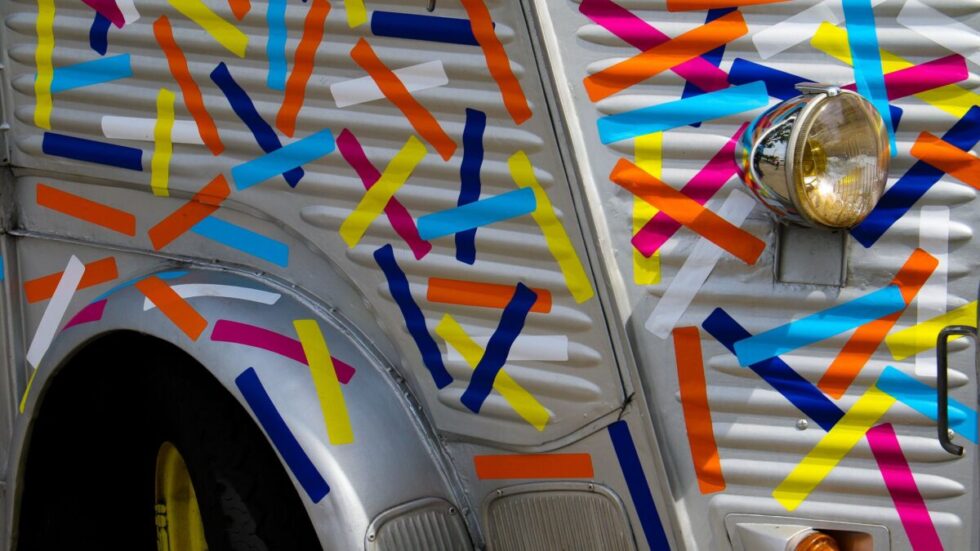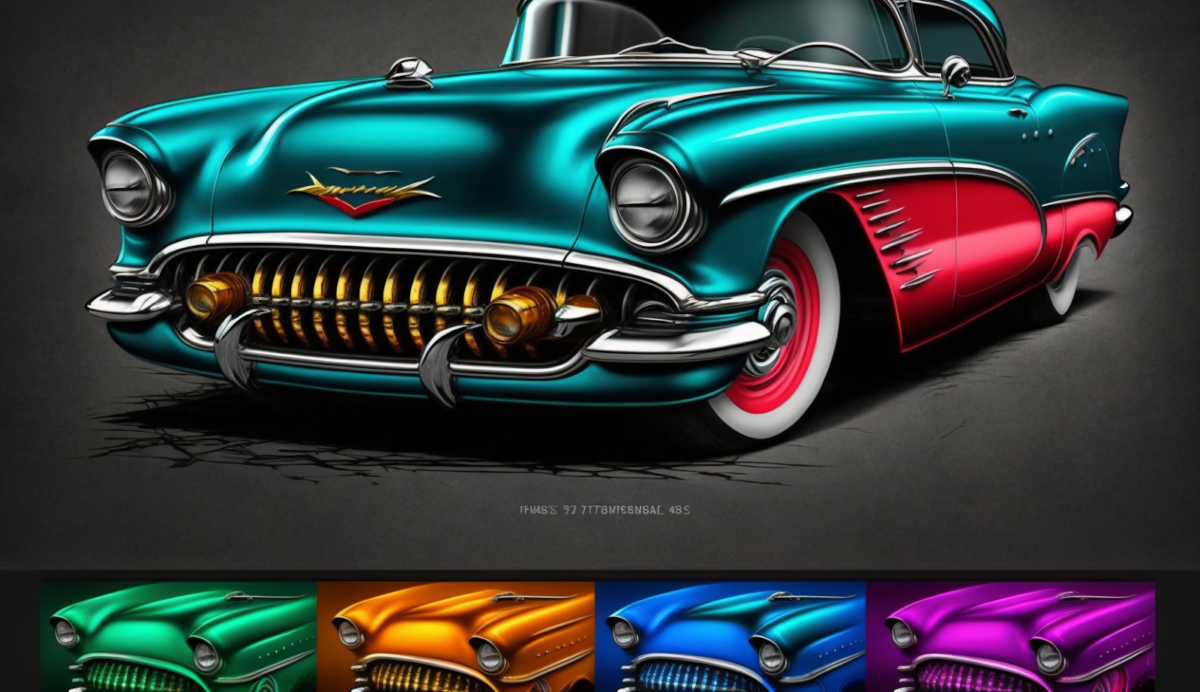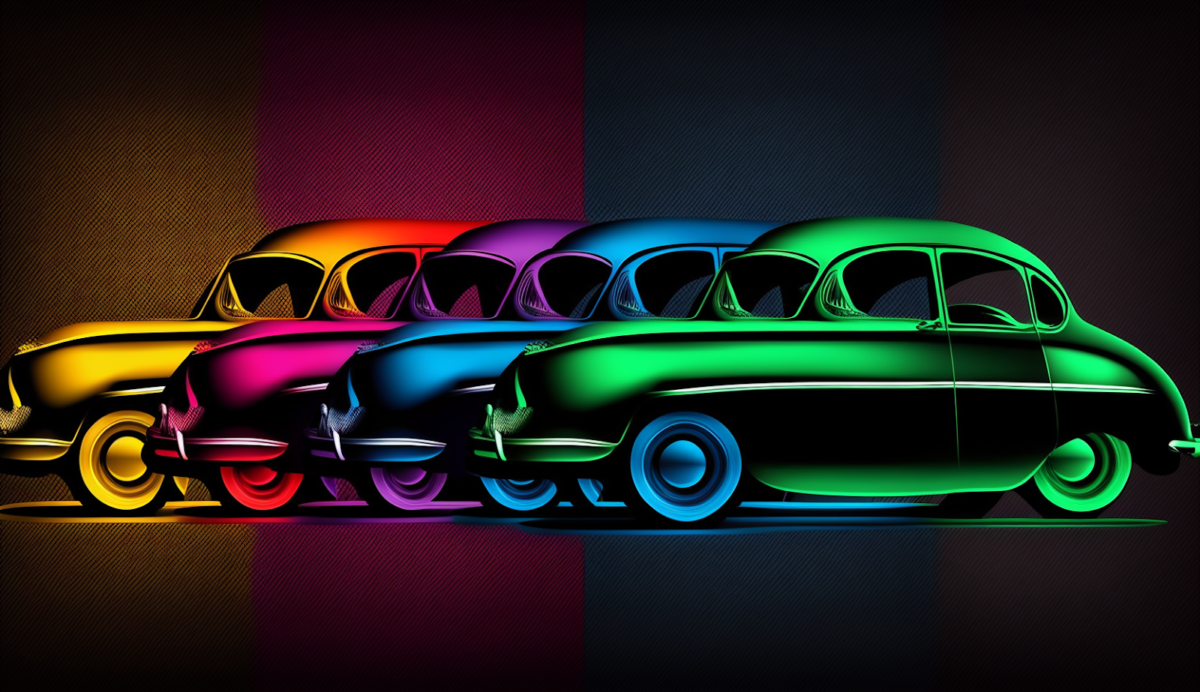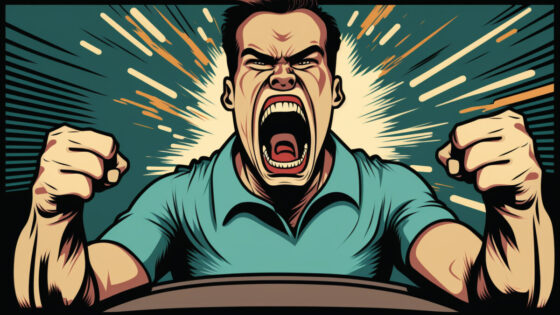The Fascinating Evolution of Car Colors: From Classic Black to Vibrant Metallics and Beyond


Cars have come a long way since the days of the Model T, when they only came in one color: black. Today, car buyers have a wide array of colors to choose from, ranging from classic shades to bright and bold hues. But how did we get here? In this article, we’ll explore the fascinating evolution of car colors, from the early years to today’s popular trends.
The Early Years of Car Colors
In the early years of automobile production, cars were primarily painted in dark colors like black, navy, and green. This was largely due to the limitations of paint technology at the time. However, as paint technology advanced, car manufacturers began to offer a wider range of colors. Here are some key points about the early years of car colors:
- Before the 1920s, car colors were vibrant and varied, with hues like red, yellow, and blue being popular choices. Car manufacturers believed that brighter colors would make their cars more attractive to buyers.
- In the 1920s, black became the most popular color for cars. This was largely due to the influence of Henry Ford, who believed that black paint was the most durable and cost-effective option.
- By the 1930s, car manufacturers had begun to offer a wider range of colors, including metallics and two-tone combinations. This trend continued throughout the 1940s and 1950s, with bright colors like turquoise, pink, and orange becoming popular choices.
One interesting aspect of the evolution of car design has been the shift in focus from classic color choices to more vibrant, eye-catching options. In recent years, luxury car manufacturers have particularly embraced this trend, offering a range of unique and exciting features that set their vehicles apart.
For example, some of the best luxury cars on the market today boast state-of-the-art technology like fully digital dashboards, advanced driver-assistance systems, and even self-parking capabilities. Additionally, these vehicles often come with luxurious features like leather interiors, heated seats, and panoramic sunroofs.
If you’re interested in learning more about the latest luxury car features, check out this article on Cars311.com. It offers a comprehensive guide to the most exciting and innovative technologies and amenities available in today’s high-end vehicles.
A History of Automobiles and Color Before the Age of Chromophobia
According to Autouniversum, before the 1920s, car colors were vibrant and varied. During this time period, car manufacturers believed that brighter colors would make their cars more attractive to buyers. Here are some key points about the history of automobiles and color before the age of chromophobia:
- In the early years of automobile production, car colors were often inspired by the colors of horse-drawn carriages. Popular colors included shades of red, green, and blue.
- In the 1910s, cars began to be painted in brighter, more vibrant colors like yellow, orange, and red. These colors were seen as a way to stand out on the road and attract attention.
- By the 1920s, black had become the most popular color for cars, largely due to the influence of Henry Ford. However, other manufacturers continued to offer a wide range of colors, including pastels and bright metallics.
A Brief History of Car Paint Colors
The history of car paint colors is a fascinating one, with trends and preferences changing over time. Here are some key points about the evolution of car paint colors:
- In the early years of automobile production, cars were typically painted in dark colors like black, navy, and green. This was largely due to the limitations of paint technology at the time.
- By the 1930s, car manufacturers had begun to offer a wider range of colors, including metallics and two-tone combinations. Bright colors like turquoise, pink, and orange became popular choices.
- In the 1960s and 1970s, bright metallic colors like gold, silver, and bronze were popular choices for cars. In the 1980s and 1990s, more muted colors like beige and gray became popular, reflecting a shift towards a more conservative and understated aesthetic.
The Rise of Colorful Cars

In the mid-20th century, cars became more than just a means of transportation; they became symbols of style and status. As a result, car manufacturers began to experiment with bolder and brighter colors to appeal to customers. Here are some key points about the rise of colorful cars:
- In the 1960s, cars began to be offered in eye-catching colors like neon greens and yellows, inspired by the Pop Art movement of the time.
- The 1970s saw a shift towards more earthy and subdued colors like brown and beige, as the counterculture movement rejected the flashiness of the previous decade.
- In the 1980s and 1990s, the fashion industry heavily influenced car color choices, with pastel colors like light blue and pink becoming popular.
- By the 2000s, car colors had shifted towards more neutral shades like silver and gray, as consumers sought a more understated look. However, vibrant hues like bright red and blue remained popular for sports cars and luxury vehicles.
Auto Color: A Study of Color Application in Automobiles
According to Jithin J. Mathew, an expert in automotive design, color choices in the 1980s and 1990s were influenced by the fashion industry. Here are some more details:
- Pastel colors like light blue and pink were popular choices during this time, reflecting the popularity of preppy fashion and the emerging trend of gender-neutral clothing.
- In the 1990s, car manufacturers also began to experiment with iridescent colors that shifted in the light, giving cars a futuristic, sci-fi feel.
- The influence of fashion on car color choices waned in the 2000s, as consumers sought a more practical and utilitarian approach to car design.
A Brief History of Car Color Evolutions Throughout the Years
Car colors have evolved significantly since the early days of the automobile. Here are some notable shifts in color trends throughout history:
- Before the 1920s, cars were typically painted in dark colors like black, navy, and green due to paint technology limitations.
- By the 1930s, car manufacturers had begun to offer a wider range of colors, including metallics and two-tone combinations.
- In the 1960s, car colors became even bolder and more eye-catching, with neon greens and yellows becoming popular choices.
- The 1970s saw a shift towards more earthy and subdued colors like brown and beige, as the counterculture movement rejected the flashy colors of the previous decade.
- In the 2000s, car colors shifted towards more neutral shades like silver and gray, although vibrant hues like bright red and blue remained popular for sports cars and luxury vehicles.
Popularity and Trends of Car Colors
The colors of cars have evolved throughout history, from the early days of limited paint technology to the bold and bright hues of the 1960s and beyond. Today, car colors continue to shift and change, with certain shades remaining more popular than others. Let’s take a closer look at the popularity and trends of car colors.
Car Color Popularity
- According to Germain Cars, white, black, and gray were the three most popular car colors in the United States in 2021.
- However, car color popularity varies by region and country. For example, silver is a popular choice in Japan, while red is a popular choice in Italy.
- Wikipedia notes that white has been the most popular car color in the United States for over a decade, followed by black and gray. However, this trend has begun to shift towards more colorful options in recent years.
Evolution of the Color of New Cars Since 2000
- In the early 2000s, car color trends took a dramatic shift towards more subdued colors.
- According to data compiled on Reddit’s r/dataisbeautiful, white was the most popular car color in the United States from 2000 to 2020, followed by silver and black.
- This shift towards neutrals and muted shades has been attributed to several factors, including a desire for a more understated look, a preference for resale value, and an overall cultural shift towards minimalism.
- However, recent years have seen a resurgence of brighter colors, with shades like blue, green, and red becoming more popular choices for cars.
The Evolution of Car Colors
The history of car colors is a fascinating one, full of cultural and technological shifts that have influenced the way we think about and use color on our vehicles. From the early days of automobiles, when color was seen as a luxury reserved for the wealthy, to the modern era of mass production and personalization, car colors have undergone a significant evolution.
According to Northwest Motorsport, early car colors were typically muted and earthy, reflecting the limitations of early paint technology. However, as advances in paint production and application were made, car colors began to take on a more vibrant and varied palette. The 1950s and 60s in particular were marked by a boom in colorful car designs, with bright and bold shades like pink, turquoise, and purple becoming popular.
The 1970s and 80s saw a shift towards earthier, more natural shades, reflecting a growing environmental consciousness and a desire for more subdued aesthetics. However, the 1990s saw a resurgence of bright and bold colors, with hues like neon green and hot pink becoming popular among younger car buyers.
The History of Car Colors
According to HGregoire, the history of car colors can be traced back to the early days of the automobile, when color was seen as a luxury reserved for the wealthy. The first cars were typically painted black, as it was the most readily available and affordable paint color at the time. However, as the automobile industry grew and technology improved, car colors began to diversify and reflect changing cultural trends.
The 1950s and 60s saw a boom in colorful car designs, with bright and bold shades like pink, turquoise, and purple becoming popular. In the 1970s and 80s, more natural, earthy tones became popular, reflecting a growing environmental consciousness and a desire for more subdued aesthetics.
The 1990s saw a resurgence of bright and bold colors, with hues like neon green and hot pink becoming popular among younger car buyers. However, in the early 2000s, car color trends took a dramatic shift towards more subdued colors, with white, silver, and black becoming the most popular shades.
A Brief History of Car Colors, and Why Are We So Boring Now? (Consumer Reports)
While car colors have gone through numerous transformations over the years, the trend in recent years has been towards more neutral and subdued colors such as black, white, and gray. This is a stark contrast to the vibrant and bold hues that were popular in the past.
According to Consumer Reports, the popularity of neutral colors can be attributed to a desire for cars to look more sophisticated and elegant. Additionally, car buyers are looking for colors that have good resale value and are less likely to become outdated quickly.
But it hasn’t always been this way. In the 1950s and 1960s, bright and bold colors were all the rage, with hues like pink, turquoise, and yellow dominating the car market. This trend continued into the 1970s, with metallic colors becoming popular.
However, by the 1980s, car colors had started to become more subdued, with black, white, and gray becoming popular choices. This trend continued through the 1990s and into the 2000s.
This Graph Shows How Car Paint Colors Have Gotten More Boring Over the Years (The Drive)
In recent years, car manufacturers seem to have lost their love for color. Instead of bold, bright hues, cars today are more likely to be black, white, or gray. A graph published by The Drive in 2018 shows just how dramatic this shift has been.
The graph, which is based on data from Axalta Coating Systems, a leading automotive paint supplier, reveals that in 1985, only 15% of cars sold in North America were white, black, or gray. By 2017, that number had skyrocketed to 76%. Meanwhile, the popularity of brighter colors like red, green, and yellow has plummeted.
There are a few reasons for this trend. One is that car buyers are becoming more conservative in their color choices. Neutral colors like black, white, and gray are seen as timeless and easy to resell. Additionally, car manufacturers may be playing it safe in order to appeal to a wider range of customers.
But some industry experts believe that the decline of colorful cars is a missed opportunity. “Color is an emotional choice,” says Nancy Lockhart, global color marketing manager for Axalta. “It’s what makes people happy and what makes them stand out.”
Iconic Car Color Combinations
While car manufacturers may be playing it safe with their color choices, there have been plenty of iconic car color combinations throughout history. Here are just a few:
- Ford Mustang in Highland Green: This color is forever associated with the 1968 Mustang GT that Steve McQueen drove in the movie “Bullitt.”
- Chevrolet Camaro in Hugger Orange: This vibrant orange color was a popular option for the first-generation Camaro in the late 1960s.
- Dodge Challenger in Plum Crazy: This bright purple color was a factory option for the Challenger in the early 1970s.
- Lamborghini Miura in Arancio Argos: This orange color was a popular choice for the iconic Miura sports car in the 1960s and 1970s.
- Porsche 911 in Guards Red: This bright red color has been a popular option for the Porsche 911 for decades.
- Volkswagen Beetle in Sunflower Yellow: This cheerful yellow color was a popular choice for the original Beetle in the 1960s.
- BMW M3 in Laguna Seca Blue: This striking blue color was a factory option for the E46 M3 in the early 2000s.
- Mazda MX-5 Miata in Soul Red: This deep red color was introduced for the fourth-generation MX-5 in 2015 and has become a signature color for the popular roadster.
- Ferrari 458 Italia in Rosso Corsa: This classic Ferrari red color has been a popular choice for the 458 Italia supercar.
- Aston Martin DB5 in Silver Birch: This iconic silver color is forever associated with the Aston Martin DB5 that James Bond drove in the movie “Goldfinger.”
The fascinating evolution of car colors, from classic black to vibrant metallics and beyond, is a topic that has always captivated car enthusiasts. One aspect that has contributed to this evolution is car customization and modifications in the US, which have allowed car owners to express their creativity and personal style through their vehicles.
For example, at Cars311.com, a popular car customization and modification website, you can find a wide range of customization options, from simple vinyl wraps to full body kits and engine upgrades. In addition to enhancing a car’s performance and functionality, these modifications also offer an opportunity to showcase unique colors and designs that reflect the owner’s personality and taste.
FAQ
According to various studies and data, white is currently the most popular car color worldwide, followed by black, gray, and silver. However, this can vary by region and market.
One reason is that car manufacturers are playing it safe by producing cars in neutral colors that appeal to a wide range of buyers. Another factor is the cost of producing and maintaining more elaborate colors, such as metallic or pearl finishes, which can be more expensive and difficult to repair.
Some experts predict that we may see more bright and bold colors in the future, as well as more eco-friendly, sustainable paints. However, it’s also possible that car colors will continue to trend towards neutral and subdued shades.
Yes, many car manufacturers and third-party companies offer options for customizing the color of your car. However, keep in mind that this can be expensive and may affect the resale value of your vehicle. It’s also important to check local regulations and laws regarding car colors.
Yes, the color of a car can affect its resale value. Generally, cars in popular and neutral colors such as black, white, and silver tend to have higher resale values, while cars in more unique or bold colors may have lower resale values. However, other factors such as the condition, mileage, and features of the car also play a role in determining its resale value.



